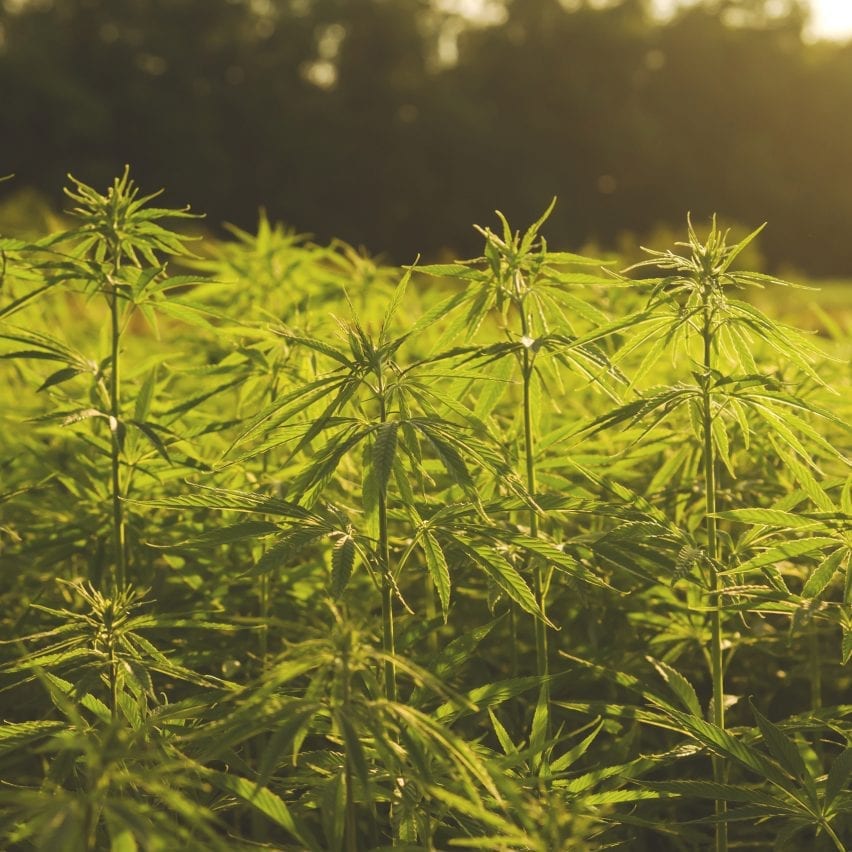Hemp "more effective than trees" at sequestering carbon says Cambridge researcher

Hemp can capture atmospheric carbon twice as effectively as forests while providing carbon-negative biomaterials for architects and designers, according to Cambridge University researcher Darshil Shah.
"Numerous studies estimate that hemp is one of the best CO2-to-biomass converters," said Shah, who is senior researcher at the Centre for Natural Material Innovation at Cambridge.
"It's even more effective than trees," he said. "Industrial hemp absorbs between 8 to 15 tonnes of CO2 per hectare of cultivation."
"In comparison, forests typically capture 2 to 6 tonnes of CO2 per hectare per year depending on the number of years of growth, the climatic region, the type of trees etc."
Darshil Shah (above) conducts research into biomaterials made from hemp (top) at the Centre for Natural Material Innovation at Cambridge Carbon-negative bioplastics and construction materials made from the plant can be used to "replace fibreglass composites, aluminium and other materials in a range of applications," he added.
The Centre for Natural Material Innovation, part of Cambridge University's Department of Architecture, conducts research into biomaterials in order to "transform the way we build to achieve zero carbon emissions."
Hemp is a "multi-purpose crop"
Shah's work covers engineered wood, bamboo and natural fibre composites as well as hemp, which he described as "a multi-purpose crop that offers materials and res...
| -------------------------------- |
| Craig Green designs "wearable habitats" for Moncler |
|
|
Villa M by Pierattelli Architetture Modernizes 1950s Florence Estate
31-10-2024 07:22 - (
Architecture )
Kent Avenue Penthouse Merges Industrial and Minimalist Styles
31-10-2024 07:22 - (
Architecture )






